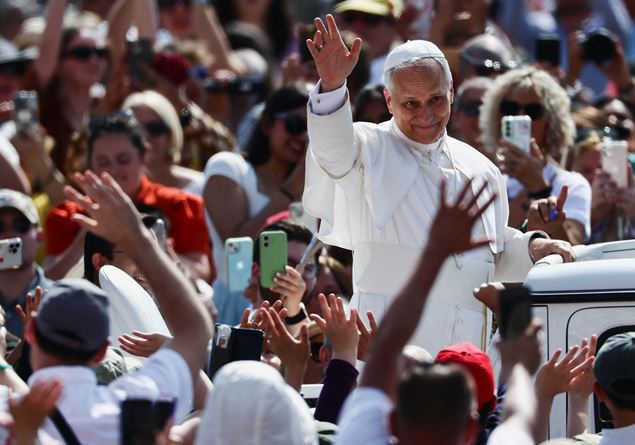SortI can and must continue to hope even when we feel paralyzed. Pope Leone continues the cycle of catechesis on “Jesus Christ our hope” by focusing his meditation on the healing of the paralytic narrated by the Gospel of John.
There are many situations in which we too today «We feel” blocked “and closed in the dead end. Sometimes it seems to us that it is useless to continue hoping; We become resigned and we no longer want to fight. This situation is described in the Gospels with the image of paralysis ». Jesus goes to Jerusalem for a feast of the Jews, but does not immediately go to the temple; Instead, he stops at a door, where the sheep were probably washed which were then offered in the sacrifices. VIcino to this door, many sick people also stopped, who, unlike the sheep, were excluded from the temple because they are considered impure! And then it is Jesus himself who reaches them in their pain ».
These people hoped in a miracle that changed their life. For this reason they stopped near the door where a swimming pool was located, whose waters were considered thaumaturgical, that is, capable of healing: “In some moments”, explains Leone, “the water agitated and, according to the belief of the time, who dived first were healed. Thus a sort of “war between poor” came to create: we can imagine the sad scene of these patients who dragged on themselves to enter the pool. That swimming pool was called Betzatà, which means “Casa della Misericordia”: it could be an image of the Church, where the sick and the poor gather and where the Lord comes to heal and give hope ».
Jesus turns to a man who had been paralyzed for 38 years. A resigned man because he never manages to immerse himself in the pool, when the water shakes. “In fact, what paralyzes us, many times,” underlines the Pope, “is precisely the disappointment. We feel discouraged and I risk falling into the acid ».
This is why Jesus addresses a necessary question to the paralytic: “Do you want to heal?”. And this is because “when it has been blocked for many years, the will to heal can also fail. Sometimes we prefer to stay in the condition of sick people, forcing others to take care of us ». The paralytic responds to Jesus articulatedly. «He says first of all that he has no one who immerses him in the pool: so the fault is not his, but of the others who do not take care of him. This attitude becomes the pretext to avoid taking on its responsibilities. But is it really true that he had nobody who helped him? Here is the illuminating response of Sant’Agostino: “Yes, to be healed he absolutely needed a man, but of a man who was also God. (…) So did the man who was necessary; why to differ still healing?” ».
In addition, the paralytic has a fatalistic vision of life. He says that “when he tries to immerse himself in the pool there is always someone who arrives before him”. And we too, often “think that things happen to us because we are not lucky, because fate is against us. This man is discouraged. He feels defeated in the struggle of life. Instead, Jesus helps him to discover that his life is also in his hands. He invites him to get up, to recover from his chronic situation, and to take his stretcher. That bed should not be left or thrown away: it represents its disease past, it is its history. Until then the past has blocked it; He forced him to lie like a dead man. Now it is he who can take that stretcher and take it where he wants: he can decide what to do with his story! It is about walking, taking responsibility for choosing which way to go. And this thanks to Jesus! “
Finally, the Pope invites everyone to trust in the Lord Asking him “the gift of understanding where our life has blocked himself. Let’s try to give voice to our desire to heal. And we pray for all those who feel paralyzed, who see no ways out. We ask to return to live in the heart of Christ who is the real house of Mercy! ».


